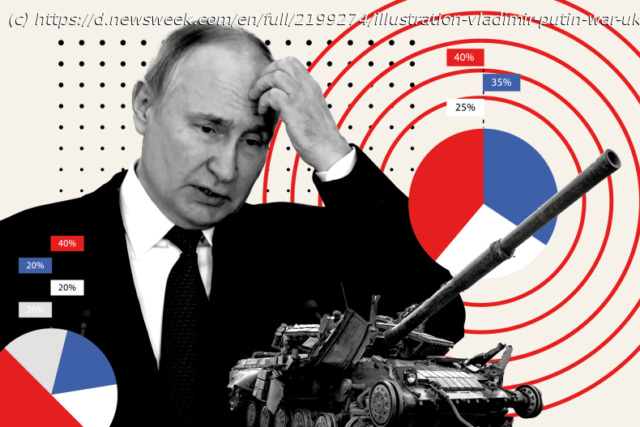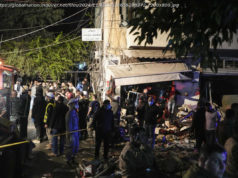A year on, Vladimir Putin’s invasion has caused catastrophic damage not only to Ukraine, but to many sections of Russian society.
When President Vladimir Putin launched a full-scale invasion of Ukraine last February, the Kremlin hoped to seize the capital Kyiv in a matter of days.
A year later, there appears to be no end in sight. The cost of the conflict continues to mount, peace talks have stalled and both sides have suffered staggering losses, with tens of thousands of soldiers killed.
Kyiv is expecting Moscow to launch a renewed offensive in spring. In preparation, President Volodymyr Zelensky has been pulling in more aid, weapons and equipment from his Western allies.
The war has already caused catastrophic damage to Russia across many sections of society. As well as troop casualties and the loss of weapons and equipment, swathes of Russians have left the country or renounced their citizenship, and there has been a wider falling out with the international community. The economy has also taken a pummeling from Western sanctions.
«That includes not only the economic damage, where sanctions will take time to bite and Russia can live off the fat of its foreign currency reserves for a certain period, but also the manpower losses,» said Giles.
The impact of the war «will cause a major challenge in the way Russia is continuing to function as a state,» he said.
Below, we look at the impact of Russia’s war in Ukraine.
There are question marks over Moscow’s war losses—the Kremlin has admitted to just 5,937 military deaths in Ukraine so far.
That figure is in contrast to the estimates from the General Staff of the Ukrainian Armed Forces, which posts daily updates on Facebook. It estimates that as of the morning of February 23, 2023, Russian military losses stand at 145,850.
The Ukrainian estimate is closer to a figure for troops killed and injured that was cited by General Mark Milley, the chairman of the Joint Chiefs of Staff, last November.
Milley, the highest-ranking officer in the U.S. military, said: «You’re looking at well over 100,000 Russian soldiers killed and wounded. Same thing probably on the Ukrainian side. A lot of human suffering.»
On January 22, the head of Norway’s armed forces put the number of Russian soldiers killed and wounded closer to 200,000.
«Russian losses are beginning to approach around 180,000 dead or wounded soldiers,» said General Eirik Kristoffersen in an interview with TV2. He did not elaborate on how the numbers had been calculated.
Chatham House expert Giles described the casualty numbers on both sides as «appalling.»
The figures are «hard to discern accurately but appear by all authoritative accounts to be enormous,» he said. This «will cause a major challenge in the way Russia is continuing to function as a state.»
The Institute for the Study of War (ISW), a think tank based in Washington, said on February 9 that Russia had likely lost half the tanks deployed in the invasion of Ukraine
It cited data from the Dutch open-source group Oryx that shows 1,012 tanks have been destroyed and another 546 tanks have been captured by Ukrainian forces.
These losses represent roughly half the tanks that Moscow committed at the start of the invasion, the ISW said.
«The Russian military needs to quickly replenish these tank losses to maintain the ability to conduct large-scale mechanized maneuver warfare ahead of a likely increased pace of offensive operations in eastern Ukraine,» the think tank said.
The International Institute for Strategic Studies (IISS), based in London, said in an assessment on February 16 that about 50 percent of Russia’s T-72B and T-72B3M tanks and many of its T-80 tanks had been destroyed.






